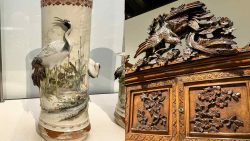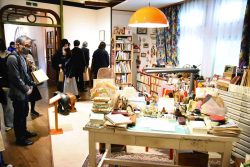Kanazawa Museum Dazzles Visitors with Varieties of Mizuhiki Works; 200 Colorful Light Shades on Display
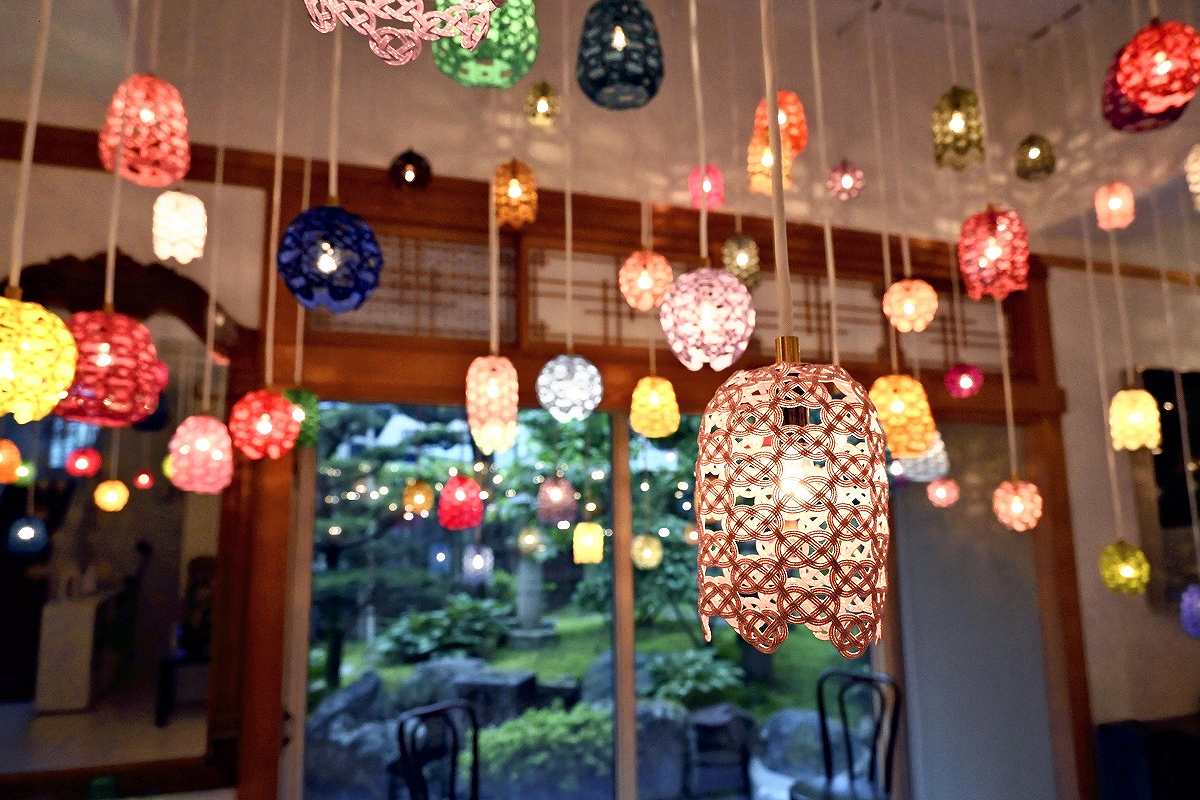
Light bulbs adorned with mizuhiki are hung from the ceiling at a museum in Kanazawa.
11:30 JST, August 5, 2024
KANAZAWA – Standing quietly by the Saigawa river, west of Kanazawa Castle, is Jiyukajin Mizuhiki Museum.
Mizuhiki is a type of traditional decorative knot, often shaped like cranes, turtles, pine trees, bamboos and plums. They are made by knotting thin cords of Japanese washi paper and other materials and used to seal gifts given at ceremonies such as weddings and funerals.
The museum opened in April 2023 with the intention of showcasing different aspects of the craft.
Upon entering, visitors are greeted by a folding screen made of mizuhiki and a curtain-like decoration adorned with countless Awaji-musubi, which is a type of knotting style. Further inside, an entire area is dedicated to displaying various kinds of mizuhiki, which is also the name given to the paper material.
Immediately drawing the eye are the 200 lightbulbs hung from the ceiling, each covered with a colorful mizuhiki. Three types of covers adorn the lightbulbs: spherical, cylindrical and bell-shaped, all made by connecting mizuhiki. The resulting light evokes a glowing warmth and softness.
Koji Hirose, the president of Jiyukajin, said, “As our six mizuhiki artists have worked on a variety of pieces, such as accessories and interior decorations that match the atmosphere in the room, color requests have also increased.”
The number of colors soared to 200 in an effort to meet the ambitions of the artists. All 200 colors are used for the light shades exhibited in the room.
In the exhibition room, a framed mizuhiki artwork and a wedding dress with a large ribbon made of light blue mizuhiki are on display. A bride actually once wore the dress for her wedding.
Yuriko Hirose, mizuhiki artist and sister of the museum’s president, played a pivotal role in the initial creating drive of the works.
Yuriko became a fully fledged mizuhiki maker after she worked as an assistant at a mizuhiki exhibition held in New Zealand in 1999, and was inspired by the visitors’ reactions.
Her career began with creating smaller items such as accessories and phone straps. Since 2015, She has since worked on decorating ryokan Japanese-style inns in Ishikawa Prefecture and stores in the Higashi-chaya district, one of the popular tourist spots in Kanazawa, raising her profile.
As mizuhiki is a handmade craft, it can come with a hefty price tag. However, since May 2023, six kinds of everyday items, including hair ties and ear cuffs, have been available.Yuriko said, “I’m sure that young people have become interested [in mizuhiki] because Instagrammable pictures went viral. I want it to become something for daily life, not only for special occasions.”
"Culture" POPULAR ARTICLE
-
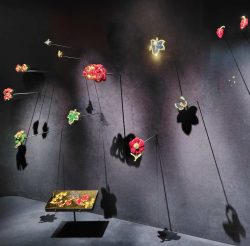
Van Cleef & Arpels Dazzles with Art Deco Artisanry at Tokyo Exhibit
-

Disney’s ‘Twisted-Wonderland’ Animated Series Puts Villains in Spotlight: New Show Features School Inspired by Classic Disney Films
-

Ayumi Hamasaki’s Shanghai Concert Canceled Day Before Schedule as Part of Beijing Backlash
-

‘The World Masterpiece Theater Series’ Celebrates 50 Years; Animator Looks Back on Creating Anime Classics
-
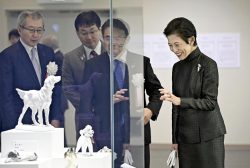
Exhibition Featuring Dog Figurines Donated by Princess Hisako of Takamado Opens in Aichi Prefecture; Princess Attends Ahead of Opening
JN ACCESS RANKING
-

Tokyo Economic Security Forum to Hold Inaugural Meeting Amid Tense Global Environment
-

Keidanren Chairman Yoshinobu Tsutsui Visits Kashiwazaki-Kariwa Nuclear Power Plant; Inspects New Emergency Safety System
-

Imports of Rare Earths from China Facing Delays, May Be Caused by Deterioration of Japan-China Relations
-

University of Tokyo Professor Discusses Japanese Economic Security in Interview Ahead of Forum
-

Japan Pulls out of Vietnam Nuclear Project, Complicating Hanoi’s Power Plans



